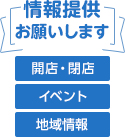表示形式
表示切替
カテゴリ別に表示
戻る
最新から全表示
| 1. | びびなび ロサンゼルス 独り言Plus(451kview/4029res) |
フリートーク | 今日 11:47 |
|---|---|---|---|
| 2. | びびなび ロサンゼルス オーバーステイ後の結婚、グリーンカード(3kview/50res) |
お悩み・相談 | 今日 10:23 |
| 3. | びびなび ロサンゼルス 日本旅行に関することは、何でもアリ、のトピ(904kview/4350res) |
フリートーク | 今日 09:37 |
| 4. | びびなび ロサンゼルス おもちを買えるところ(594view/23res) |
疑問・質問 | 今日 07:47 |
| 5. | びびなび ロサンゼルス 2025ロスファイア(1kview/58res) |
フリートーク | 昨日 07:59 |
| 6. | びびなび ロサンゼルス ロサンゼルスでオススメの24時間対応の動物病院(394view/25res) |
ペット・動物 | 2025/01/17 17:14 |
| 7. | びびなび サンフランシスコ バークレー周辺の治安の良い地域(88view/2res) |
疑問・質問 | 2025/01/17 12:02 |
| 8. | びびなび ロサンゼルス まさかトランプが勝つとは思わなかった。(7kview/160res) |
フリートーク | 2025/01/17 11:09 |
| 9. | びびなび ダラス 【相談希望】2月にプレイノに引っ越し予定です。(10view/0res) |
生活 | 2025/01/16 23:09 |
| 10. | びびなび ロサンゼルス ナルシシスト/アスペルガーのパートナーの精神的虐待(557view/14res) |
お悩み・相談 | 2025/01/16 08:12 |
びびなび ロサンゼルスホームベーカリー用の変圧器について
- #1
-
- waka
- 2022/01/03 05:40
パナソニックのノガミというホームベーカリーを購入しました。変圧器はアメリカで購入したら良いというインターネット情報を見たので、購入しようと思っているのですが、皆さんは、どのメーカーの物を使用していますか?電圧量は3倍がいいと聞きますが、皆さんはどうですか?
お分かりの方がいましたら教えていただけると助かります。よろしくお願いします。
- #2
-
- 倍金萬
- 2022/01/03 (Mon) 08:44
- 報告
wakaさん、
どこでそのホームベーカリーを購入されたのですか。もしアメリカ国内の正規の販売店で購入したのであれば変圧器は必要ありません。その商品の裏または底に製品番号や規格が書かれたラベルがあるはずです。それを見て Volt "AC 115/120V Wattage XXX" の字があれば 115~120ボルトはアメリカの電圧でそのまま壁のコンセントにさして使えます。
ただ当地でも闇の業者や個人から買ったあるいは日本から送ってもらったなら日本の電圧 100V のままの可能性があります。上記のラベルを見て判断してください。日本のパナソニックのサイトを見るとその商品の電力消費が 370W だそうで、変圧器も 400W - 600W をカバーしていれば十分です。ただ変圧器自体アメリカでは政府の家庭電気製品の安全規格を取れないので巷に出回っているもの全て、厳しく言えば、違法電気製品になるのでその辺もご承知のほどを。
- #3
-
- りえ
- 2022/01/03 (Mon) 18:15
- 報告
ちなみにですが、私は日本から象印の炊飯器(2007年)、パナソニックのホームベーカリー(2015年)を持ってきて使ってますが、変圧器なしで直接コンセントに繋いでますが問題なく使えています。
- #4
-
- 現在は
- 2022/01/03 (Mon) 19:21
- 報告
日本で売ってる、または日本で使っていた日本の会社の電気製品なら変圧器無しで使えます もう昔の話です
逆に変圧器を使っている人のほうが壊れた話はよく聞きますね
もし変圧器を買われるのなら電圧量(V)が3倍ではなく ワット数(W)の数字が多くないとダメです
ちなみにホームベーカリーは大体消費電力(W)500W位みたいですしからそこそこ高い1000Wクラスの変圧器を買わないと燃えます
ですので#2は無視していいと思います
- #5
-
- 象印
- 2022/01/03 (Mon) 19:23
- 報告
炊飯器って6-10年で買い替えらしいですね。
皆さんどうしてます? 使えたらずっと使ってますか?
- #8
-
- waka
- 2022/01/05 (Wed) 03:30
- 報告
皆さんありがとうございます!
やはり変圧器無しで使えるんですね!
逆に変圧器なしで壊れた方とかはいらっしゃらないかな?
- #9
-
- 倍金萬
- 2022/01/05 (Wed) 08:58
- 報告
waka さん、
実をいうと私も根っからの電気屋さんで変圧器を使わないで使っちゃう組なんですが、この掲示板では猛烈に悪口を履いて攻撃的な意見を言う輩がいて私は”柄にもなく”それを気にして、取りあえずは、変圧器の使用をお勧めしました。
現代の家庭電気製品メーカーは製品の開発段階でお客である消費者が劣悪環境での使用にも耐えるよう安全基準を作りそれに耐えるよう設計製造しています。その劣悪環境の中には電源電圧の大きな変動も入っており、私の勝手な想像では電源電圧が特定な時間内で最大 30% ぐらい変化し続けても製品から火が吹かないようテストをしていると思います。
さらに現在は電気釜に代表するような熱での料理でも特殊な電波を特殊な金属に流して熱を得る構造になっており、その電波のコントロールも電子回路で行っていて電灯線電圧が大きく変化してもその回路が自動的に制御できるようになっています。よって規格 AC 100V 入力の製品を 120V で使っても問題ないでしょう。ただ常に「万が一」も起こりうるのでその辺も心がけておいてください。
- #10
-
- waka
- 2022/01/05 (Wed) 11:34
- 報告
バイキンマンさん、ご丁寧にありがとうございます!
日本からの持ち込みなので、リスクは覚悟でそのまま使っちゃおうかなと思います!今のところ変圧器なしで壊れた方の投稿がないのと、みなさんからのアドバイス、バイキンマンさんの理論で自分の中で納得しました。ありがとうございます!
しかし他にも情報があったら皆さんいつでもまたお知らせお願いします!
- #14
-
- 倍金萬
- 2022/01/07 (Fri) 08:43
- 報告
またもや専門的になって申し訳ありませんが、昔は電気釜などの電熱調理器が電灯線電圧(アメリカの場合 115/120 ボルト)を直接ニクロム線等の熱交換素材に流して熱量を得ていました。しかし現代はその熱交換素材が「IH(アイエイチ)」方式にとって代わっています。
https://www.itmedia.co.jp/fav/articles/2012/27/news021.html
これは前出のように電灯線電力を専門語で言うと IH=Induction Heating (電磁誘導加熱)で熱に変換しているもので、具体的には(高周波の)磁石の力を鉄鍋に加え熱の力に替えているのです。何はともあれ昔のようにニクロム線をマッカッカにして熱を得るものではなく、ずっと安全な方法で熱の力を得ています。
よって本題に戻りその熱返還装置は電灯線電圧の大きな変化にも対応できると同時に、それらの電気釜やクッカーのメーカーさんは日本の電圧 100V の製品に対し上は 125V ぐらいの電圧が長時間加わってもビクともしないように設計し耐久テストを繰り返して行っている、と、私は考えています。
- #15
-
倍金萬さんの言われる通り、定格100Vの製品は安全性テストとして、+ー2~30%程度の電圧変化をかけても安全性の観点からは問題ない事を確認しています。しかし、米国の定格電圧は120Vであり、少なくともその上下20%の変動がある事を考慮する必要があります。従って、短時間なら問題なくとも、長時間定格電圧の120%をかけて使用するのはやはり故障の起こる可能性を高くする恐れがあります。従って、私としてはなるべく変圧器を使用される事をお勧めします。特に熱量の大きなヘヤードライヤーや布団乾燥機等は発生熱量が約1.5倍になり、温度が高くなりすぎるので危険です。私は布団乾燥機と電子オーブンレンジには1500Wの容量の変圧器を使用しています。ただし、TV、PC等の電子機器の電源は定格が100~230Vのものが殆どなので、変圧器は必要ありません。なお、米国で容量の大きな変圧器は入手困難なので、私は日本のアマゾンから取り寄せています。私はIH調理器(最新の電気釜など)については設計上どうなっているか詳しくないので、100V用の製品を120Vで使用した時にどうなるかはコメントできません。ただ、卓上のIHヒーター(1000W, 100V)は変圧器を使わなくても今の所問題なく使えているようです。(時間が短いから?いつ故障するかはリスクですね。)
- #16
-
- 名無し
- 2022/01/29 (Sat) 12:40
- 報告
ヘアードライヤーは変圧器使うけど
1000WのIHヒーターは使わない (笑)
“ ホームベーカリー用の変圧器について ” に対する書き込みの有効期限は終了しました。
引き続き同じトピックを続けられる場合は、新規トピックを作成してください。
- お店を検索するなら『タウンガイド』
-
- 北条海岸目の前のピザ屋さん『Goccia』旬の食材をふんだんに使ったメニューを種...

-
北条海岸すぐのピザ専門店Gocciaでは、季節ごとに旬の食材を使ったピザを食べることが出来るので何度行っても違うメニューをお召し上がりいただけます!食べ応えのある大きさのピザなので何枚かを一切れずつシェアして食べるのもオススメです!ペットをお連れのお客様はテラス席がございますので、テラスで一緒にお楽しみくださいませ。テイクアウトも行っております🏍
+81-470-49-5755Goccia
-
- 上質なスタイルには、髪の健康がかかせません。 髪のクリニックを主体としたメニュー...

-
髪が綺麗になるサロン若々しい上品なスタイルには髪の健康が絶対に欠かせません。eFFort(エフォート)では問診、触診、クリニック理論、デザイン理論をもとに、あなたの髪に「ベストなヘアスタイル」を「本当のあなたの美しさ」をご提案させていただきます。
+81-439-87-5551髪をキレイにするサロン eFFort
-
- アメリカで夢を実現させたいあなたへ 心理カウンセリングのごあんない

-
アメリカでの生活を楽しんでいますか。もし、思い描いていたようなアメリカ生活を送れていなければとても残念ですね。一度、私の心理カウンセリングをお試しになりませんか。日本とアメリカで専門家としてトレーニング・経験を積んできた州公認心理カウンセラーが、あなたがあなたらしく、よりしあわせに生きていただけるよう、効果的にお手伝いいたします。今すぐお問い合わせのお電話をください。お待ちしています。
+1 (714) 351-1151Midori Dekura / Marriage and Family Therapist #46171
-
- 30年以上の信頼と実績。Yun Companyで業務用冷凍・冷蔵設備の販売から設...

-
30年以上の信頼と実績。Yun Companyで業務用冷凍・冷蔵設備の販売から設置、メンテナンスまで一手に対応します。迅速な緊急対応と無料見積もり、電話相談で、あらゆるニーズに応える専門家がサポートします。ビジネスの効率を最大化する信頼のパートナーです。500ドル以上のお見積り無料: プロジェクトの計画をご検討中ですか?500ドル以上のお見積りは無料で提供しています。緊急対応も可能: お困りの際は...
+1 (213) 820-8095Yun Company / Commercial refrigeration
-
- ✍️事業譲渡仲介、🏢商業不動産売買及び賃貸仲介、🍺アルコールライセンス等の許認可...

-
JRC Advisors Inc.は、アメリカ・カリフォルニア州のロサンゼルスやオレンジカウンティの飲食店に特化した商業不動産の売買及び賃貸借仲介や事業譲渡仲介を行う不動産業務、飲食店開業に必要な許認可の代行取得等をお手伝いする開業支援業務等のレストラン事業を幅広くサポートするコンサルティング会社です。「事業が軌道に乗っている間にビジネスの売却を検討したい」「カリフォルニア州エリアに飲食店をオープ...
+1 (310) 975-3186JRC Advisors l eXp Commercial
-
- お客様ひとりひとりお体の状態を確認しつつオーダーメードの施術をご提供します。ぜひ...

-
リゾートホテルやトータルビューティーサロンで長年働いていた経験を持つオーナーによるハワイアンロミロミ。ロミロミは手技のマッサージでリンパの流れが良くなり疲労回復効果や肩こり腰痛等様々な症状に効果的です。日頃の疲れを癒したい方はぜひお待ちしております♪
Kekua
-
- Lexusをお考えですか?早速サチまでご連絡下さい!South Bay Lexu...

-
Lexusにしようかなと思えばまずはサチまでご連絡を!新車、中古車、リースそしてローンのことまで、何でもLexusの事ならサチにお任せ下さい。South Bay Lexusにて日本語のセールスとして15年近くLexusファンのお客様に喜ばれております。Lexusのことなら何でもサチにお任せ下さい。新車、中古車、リースそしてローンの事まで経験たっぷりのサチが日本語で全てお世話いたします。そしてなんと...
+1 (310) 940-4694South Bay Lexus
-
- 皆様によろこばれてます!! 普段のお掃除から大掃除、部分的お掃除まで全てお手伝い...

-
ハワイでおもてなし! 日本の徹底したお掃除で、丁寧に対応いたします。お掃除に関する事まずはご相談ください。お客様のニーズにあわせてプランを考えます。年配の方、産前産後、共働き、シングルの方々等、皆様に喜ばれています。ハワイの別荘, ご自宅, コンドミニアム, オフィス, 店舗等の清掃。入居前、入居後清掃、リフォーム後のお掃除、ご自宅の定期清掃、別荘の定期清掃、オフィスの定期清掃、照明器具の内部や水...
+1 (808) 209-3719OMT OMOTENASHI CLEANING CORP.
-
- ハワイ・カパフルの行列のできる大人気とんかつ屋です。電話注文のテイクアウトあり。...

-
ハワイで本格的なとんかつをお召し上がりいただけます!テイクアウトも受け付けております☆これからは待ち時間なく、出来立てのとんかつが食べれます!とんかつ玉藤は北海道札幌市で創業を開始してから今年で66年を迎えました。長年に渡り職人の手によって育てられてきた「老舗の味」を海外のお客様にも体験してほしい・・・その思いから2017年2月に海外1号店としてハワイ州ホノルル市に「玉藤カパフル店」をオープン致し...
+1 (808) 922-1212とんかつ玉藤
-
- ロサンゼルスの海上輸送の老舗です。小口の貨物から車・バイクまで、ぜひご相談くださ...

-
日本はもちろん世界へ荷物の受け取りからお届けまで、日本人スタッフが真心こめてお手伝い致します。輸出輸入に関わらず、煩雑な手続きは全て私たちにお任せ下さい。長年にわたり、インターラインはアジアの主要な地域で独自のオフィスやパートナーを構築し、50カ国以上に事業を広げてまいりました。 刻々と変化し続ける運送業界において必要とされる競争力のある料金や柔軟な対応といったハイクオリティなサービスをお客様にご...
+1 (310) 834-5500Interline
-
- ウェディング・イベントでのお花、キャンドルを使った装飾が得意の、こだわりのFlo...

-
東京・ハワイで、約25年のウェディングフラワー経験をもつ熟練デザイナーが、お一人お一人丁寧に、お打ち合わせから、当日の装飾をさせていただきます。アメリカらしいナチュラルで斬新な、洗練されたデザインを、日本人チームのこだわりで、仕上げていきます。デティールにこだわりがあるお客様、ぜひ一度、HPをご覧ください。
+1 (808) 638-1876MAnYU Flowers Inc
-
- 【2025年1月受講生 募集中!】JVTA ロサンゼルス校で映像翻訳 (字幕・吹...

-
JVTA ロサンゼルス校では現在、1/7/2025から始まるクラスの受講生を大募集! 皆様のご希望に合わせ、無料の個別カウンセリングを行います。🌸お気軽にご連絡ください!🌸お試しクラスは、$656~受講可能✨
+1 (310) 316-3121Japan Visualmedia Translation Academy / 日本映像翻訳アカデミー
-
- 海外結婚相談所・国際結婚相談所・TJMは、幸せなご縁をグローバルにつなぐ結婚相談...

-
海外駐在の日本人のみなさま、永住されている日本人のみなさまの結婚のお世話をさせていただいています。留学中の学生のみなさまはご相談ください。また、外国人男性との結婚を希望される女性のみなさまへのご紹介もございます。海外結婚相談所・TJMの特徴・結婚を目標としている独身男女限定です。・身分証明をご提出いただいています。・おひとり、おひとり面接を行っています。・ご紹介は秘密厳守をお約束します。
+1 (443) 470-5750海外結婚相談所・TJM(旧Kaiwa-USA)
-
- 空港送迎、視察・観光ツアーなど、ハイヤー送迎サービスを行っています。創業30年の...

-
SUV、スプリンターバンなど、ご利用人数や用途に合わせて最適な車種をお選びいただけます。
+1 (800) 794-0994AM World Express
-
- デザインから印刷までトータル・コーディネートしております。デザインだけ、印刷だけ...

-
サウスベイにある創業40年以上の印刷屋です。ロサンゼルスやオレンジカウンティだけでなく、州外や日本への発送もOK。無料ローカルデリバリーもあります!
+1 (310) 534-7612Office World Print


